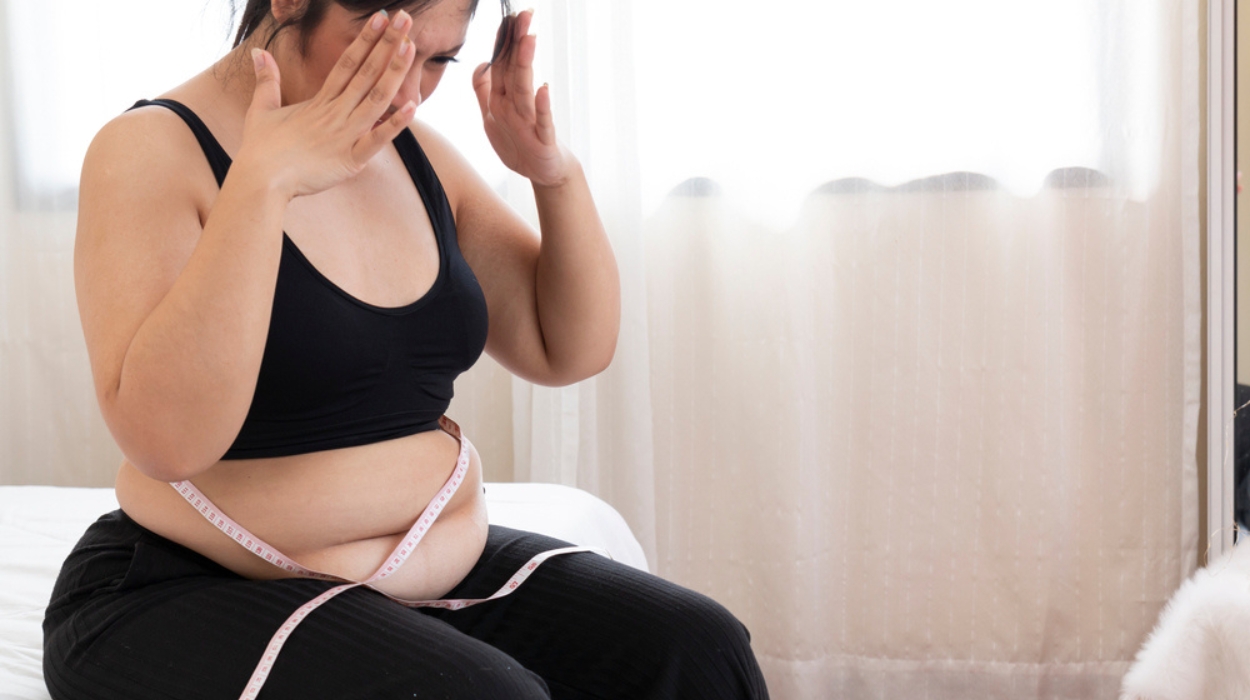How To Lose Neck & Face Fat: Effective Methods You Should Know In 2024
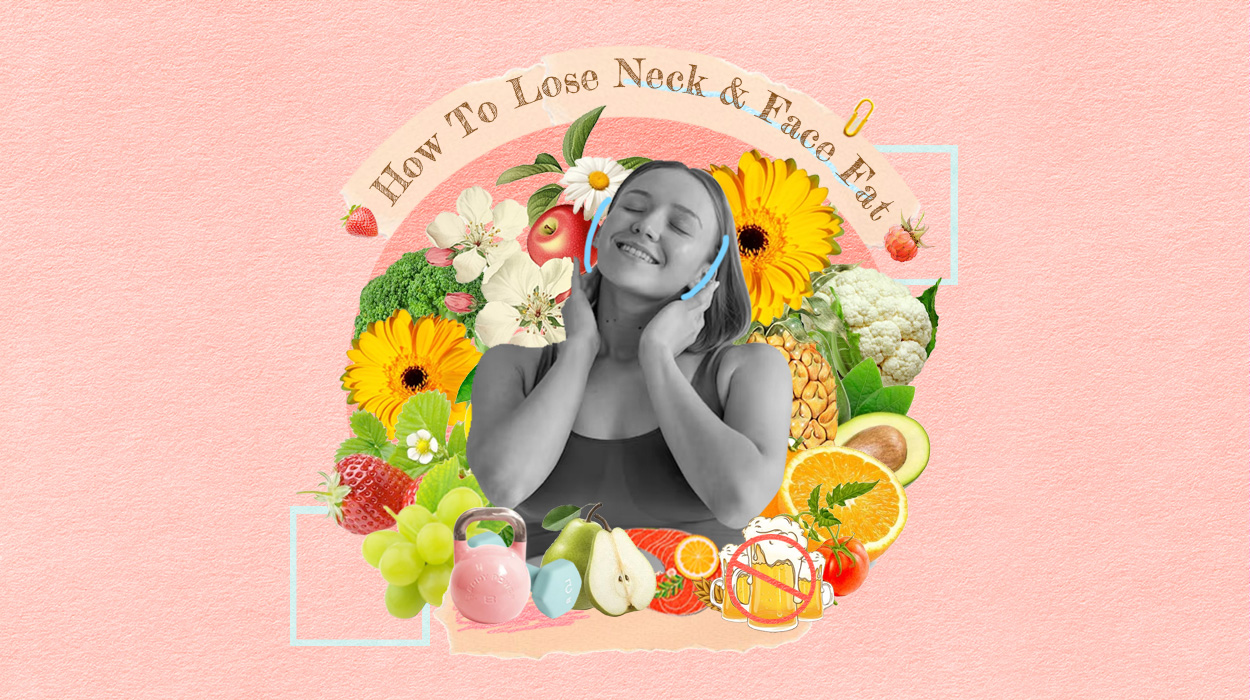
The quest for a sculpted face and neck is not uncommon. Excess body fat in the face and neck can often be a source of discomfort, both physically and emotionally. Unsurprisingly, you are looking for methods to lose face and neck fat in the quest for those chiseled cheekbones.
Facial fat is attributed to underlying medical conditions, diet, and lifestyle choices. This article explores the best methods to lose fat from the face and neck, ranging from facial workouts and dietary adjustments to surgical options.
Incredible Ways To Get Rid Of Neck And Face Fat
- Facial workouts may help tone facial muscles, though more research is needed. Exercises include neck rotations, puckering lips, using a squeeze ball, and chewing gum.
- Reducing dietary sodium can decrease facial puffiness and swelling.
- Reducing caloric intake can result in overall weight loss, including in the face and neck.
- Increasing cardio exercises can fast-track overall weight loss and reduce face and neck fat.
- Decreasing alcohol consumption can prevent fat accumulation and bloating.
- Surgical procedures like SculpSure Submental, Botox, Pelleve Skin Tightening, Liposuction, Mesotherapy, Liposculpting, and Kybella offer targeted fat reduction in the face and neck.
Best Methods To Burn Fat From Face And Neck
Before jumping into how to lose face fat, it is important to check for any underlying medical conditions. Some conditions that could cause puffiness in the face and neck include Cushing’s syndrome,[1] thyroid problems,[2] and sometimes even allergic reactions.[3]
Once any underlying conditions have been ruled out, the following tips can help burn fat from the face and neck.
Featured Partner Offer
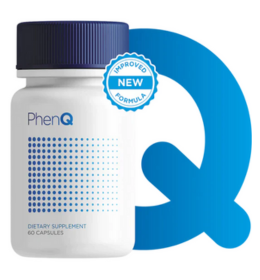
PhenQ
- Helps to burn fat
- Crushes food cravings
- Boosts energy and balances mood
- High-quality formula
Money Back Guarantee and Free US Shipping
Facial Workouts
Studies suggest that facial workouts[4] may enhance one’s facial aesthetics by reducing signs of aging and boosting facial muscle tone. Incorporating these facial exercises into your daily routine can give your facial muscles a more defined look. However, the evidence could be more accurate, and more research is needed to determine their effectiveness.
Some exercises to try include:
- Gently rotate your head and stretch the jaw in circular motions to warm up the neck muscles.
- Sitting upright, tilt your head back and pucker your lips as if you’re whistling at the ceiling. Hold for 10-20 seconds, repeat ten times.
- Keep a squeeze ball handy for this exercise. Sit straight and place the ball under your chin, pushing down with a firm motion. Repeat 10-30 times.
- Stick out your bottom lip in a pout, then use your neck muscles to tilt your chin towards your chest without moving your upper back. Hold for 3 seconds, repeat 10-20 times.
- Chew gum after meals to help reduce snacking and contribute to overall calorie reduction, providing a minor workout for the cheek muscles.
Reduce Dietary Sodium
It might not be fat that’s causing face or neck puffiness. It could be water retention.
Excessive sodium intake can lead to water retention in the skin,[5] characterized by facial puffiness and swelling. This happens because sodium can be stored in skin cells, triggering the skin to retain more water.
Processed foods account for up to 75% of dietary sodium intake.[6] Therefore, reducing the consumption of convenience foods, savory snacks, and processed meats can effectively decrease sodium intake. Lowering sodium intake may help you achieve a leaner facial appearance.
Adjust Your Diet
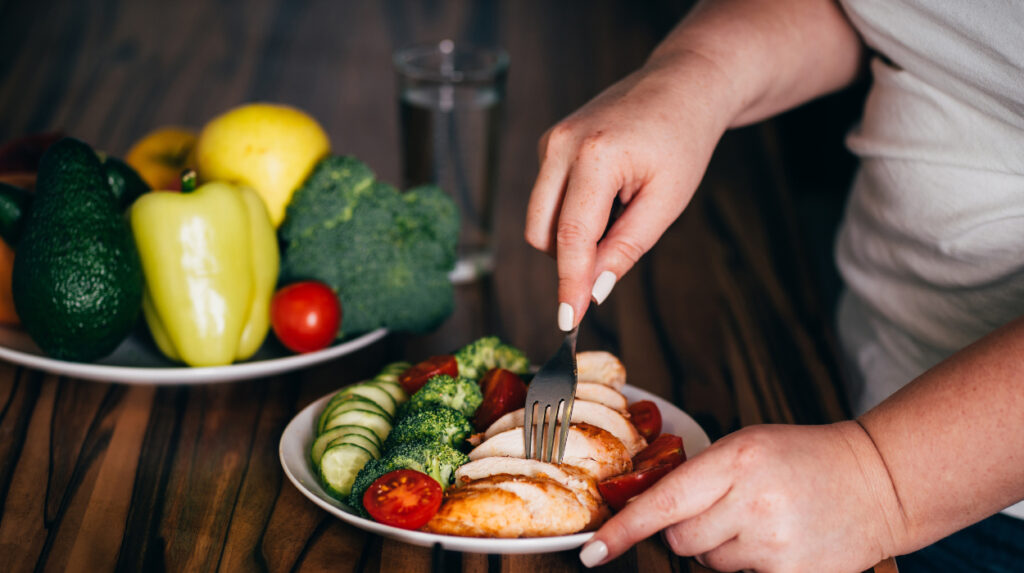
Dietary adjustments can help to reduce calories, resulting in weight loss. Overall weight loss means that facial fat and neck fat will also diminish, as weight loss can not be spot-targeted.
Some well-researched dietary changes[7] include increasing fiber and water intake while reducing refined carbs and processed packaged foods. You may even want to try a fat-burning supplement alongside a balanced diet.
Increase Cardio
Cardio exercises are helpful to increase weight loss. Combining it with resistance and strength training,[8] plus a low-calorie diet, is the most effective way to lose weight, helping you lose fat in your face and neck.
Some forms of cardio exercise to try include running, cycling, swimming, stair climbing, and high-intensity interval training.
Decrease Alcohol
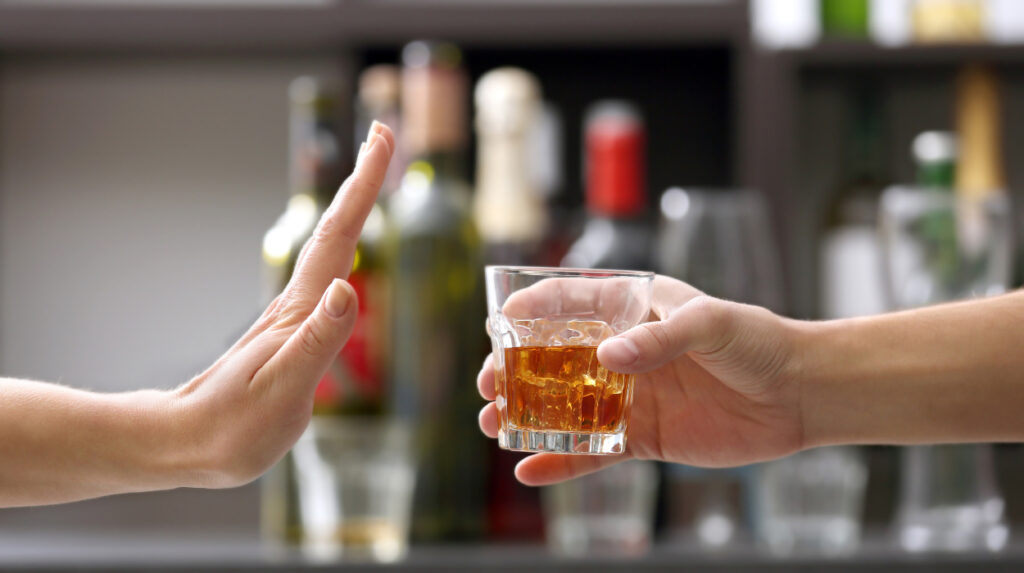
Drinking alcohol in moderation is acceptable, but heavy drinking can lead to weight gain and bloating.[9]
Alcohol lacks essential nutrients and can cause dehydration and water retention.[10] It may also impact hunger levels and reduce the hormone leptin,[9] which regulates fullness. Excessive drinking is associated with inflammation,[11] weight gain, and excess fat.
Surgical Options
There are some instances where changing your diet or lifestyle may not be feasible. In these cases, cosmetic interventions are one of the few options available. These can spot target fat removal to reduce fat in the face and neck, but not in other areas. Several methods claim to reduce face and neck fat:
- Laser Treatment: This is a non-invasive treatment[12] for neck and chin fat. The laser destroys excess fat cells by a process called lipolysis,[13] which is then naturally eliminated by the body. The process is usually well-tolerated by patients, with high satisfaction rates reported.
- Botox Injections: Botox is the brand name of an injectible form of the Botulinum toxin, a protein produced by the Clostridium botulinum bacterium. Commonly used to reduce wrinkles,[14] this treatment can also temporarily lift the neck area. The procedure involves injecting the Botulinum toxin into the area just under your chin and neck cords, offering aesthetic improvements. Neck cords are the vertical muscles in the neck that tend to become more noticeable when one tightens one’s jaw.
- Radiofrequency Treatment: This skin-tightening treatment targets wrinkles and loose skin, such as jowls, which are loose skin around the jawline. It employs radio frequency[15] energy to stimulate collagen growth and tighten the skin, enhancing skin appearance.
- Liposuction: As a surgical option, liposuction[16] can effectively remove excess neck fat. The procedure involves making a small incision and using suction to remove fat.
- Mesotherapy: This method dissolves fat[17] through injections into the chin. However, if not done correctly, it can cause nerve damage.
- Liposculpting: This technique removes fat[18] but may not improve skin elasticity. It’s an option for those primarily looking to reduce excess fat.
- Deoxycholic Acid Injections: This treatment involves multiple injections into the fat tissue. A patient may receive up to six treatments[19] over time. This method was specifically designed to reduce double chins.[20]
Causes Of Fat On The Face And Neck
One of the most common causes of neck fat, aside from being overweight or genetics, is aging.
When looking into how to get rid of neck fat, a large muscle in the neck, the platysma,[21] might play a role. Over time, this muscle starts to lose its tone, contributing to the formation of a double chin.
Diet and weight play another crucial role. While weight gain isn’t always the main cause, it can significantly contribute to neck fat. Diets high in calories, processed foods, and unhealthy fats can increase fat storage and weight gain, increasing double chin risk.
The occurrence of a double chin can be partly attributed to genetics.[22] If there is a family history of sagging skin or double chins, there is a higher probability of inheriting these features.
Another factor to consider is poor posture.[23] With aging, poor back and neck posture might increase the prominence of a double chin.
Featured Partner Offer
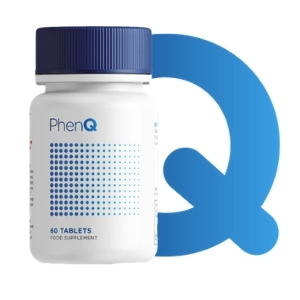
Reasons You Should Remove Fat From Face And Neck
Carrying excess neck fat, especially when linked to obesity, can pose significant health risks.[24] Individuals needing to lose weight and have additional fat around their necks often have narrower airways in the throat. This can heighten the risk of conditions such as sleep apnea, which in turn increases the risk of high blood pressure, heart disease, and stroke.[25]
The psychological impact[26] of neck fat can also substantially affect overall well-being. It can severely undermine a person’s confidence. Sometimes this can be to the extent that they lose their sense of self-worth or even become reluctant to leave their home. These areas are harder to conceal or disguise, making them more noticeable and potentially more damaging to one’s self-esteem.
The Bottom Line
Learning how to get rid of neck and face fat requires a multifaceted approach, including healthy lifestyle changes, dietary adjustments, and, potentially, medical interventions. While weight loss cannot be spot-targeted, an overall decrease in body fat can lead to a leaner face and neck.
Frequently Asked Questions
Yes, reducing neck and face fat simultaneously by reducing overall body weight is possible.
Consistent diet and exercise can reduce overall body weight and face and neck fat within a few weeks, though results may vary.
To naturally slim your face and neck, try facial exercises and adopt a healthy diet and lifestyle.
Weight in the face and neck, but not the body, may be due to genetics, aging, or underlying medical conditions.
Resources
- Yamamoto, K., Oka, K., Hasegawa, K. and Otsuka, F. (2022). Eyelid edema due to Cushing’s syndrome. Clinical Case Reports, [online] 10(6). doi:https://doi.org/10.1002/ccr3.5940.
- Mónica Ríos-Prego, Anibarro, L. and Sánchez-Sobrino, P. (2019). Relationship between thyroid dysfunction and body weight: a not so evident paradigm. International Journal of General Medicine, [online] Volume 12, pp.299–304. doi:https://doi.org/10.2147/ijgm.s206983.
- Obayashi, N., Shintani, T., Kamegashira, A., Oka, H., Ando, T., Miyata, R., Kawaguchi, H. and Mikihito Kajiya (2023). A case report of allergic reaction with acute facial swelling: a rare complication of dental acrylic resin. Journal of International Medical Research, [online] 51(7). doi:https://doi.org/10.1177/03000605231187819.
- Alam, M., Walter, A.J., Geisler, A., Wanjarus Roongpisuthipong, Sikorski, G., Tung, R. and Poon, E. (2018). Association of Facial Exercise With the Appearance of Aging. JAMA Dermatology, [online] 154(3), pp.365–365. doi:https://doi.org/10.1001/jamadermatol.2017.5142.
- Elham Nikpey, Tine Veronika Karlsen, Rakova, N., Titze, J., Olav Tenstad and Wiig, H. (2017). High-Salt Diet Causes Osmotic Gradients and Hyperosmolality in Skin Without Affecting Interstitial Fluid and Lymph. Hypertension, [online] 69(4), pp.660–668. doi:https://doi.org/10.1161/hypertensionaha.116.08539.
- Partearroyo, T., Samaniego-Vaesken, L., Ruiz, E., Aranceta-Bartrina, J., Gil, Á., González‐Gross, M., Ortega, R.M., Lluís Serra-Majem and Varela‐Moreiras, G. (2019). Sodium Intake from Foods Exceeds Recommended Limits in the Spanish Population: The ANIBES Study. Nutrients, [online] 11(10), pp.2451–2451. doi:https://doi.org/10.3390/nu11102451.
- Ju Young Kim (2021). Optimal Diet Strategies for Weight Loss and Weight Loss Maintenance. Journal of obesity & metabolic syndrome, [online] 30(1), pp.20–31. doi:https://doi.org/10.7570/jomes20065.
- Lopez, P., Taaffe, D.R., Galvão, D.A., Newton, R.U., Nonemacher, E.R., Wendt, V.M., Bassanesi, R.N., Jean, D. and Rech, A. (2022). Resistance training effectiveness on body composition and body weight outcomes in individuals with overweight and obesity across the lifespan: A systematic review and meta‐analysis. Obesity Reviews, [online] 23(5). doi:https://doi.org/10.1111/obr.13428.
- Traversy, G. and Chaput, J. (2015). Alcohol Consumption and Obesity: An Update. Current obesity reports, [online] 4(1), pp.122–130. doi:https://doi.org/10.1007/s13679-014-0129-4.
- Polhuis, K., Annemarthe H. C. Wijnen, Aafje Sierksma, Calame, W. and Tieland, M. (2017). The Diuretic Action of Weak and Strong Alcoholic Beverages in Elderly Men: A Randomized Diet-Controlled Crossover Trial. Nutrients, [online] 9(7), pp.660–660. doi:https://doi.org/10.3390/nu9070660.
- Adams, C., Conigrave, J.H., Joanne Marie Lewohl, Haber, P. and Morley, K.C. (2020). Alcohol use disorder and circulating cytokines: A systematic review and meta-analysis. Brain Behavior and Immunity, [online] 89, pp.501–512. doi:https://doi.org/10.1016/j.bbi.2020.08.002.
- Thomas WW;Bloom JD (2017). Neck Contouring and Treatment of Submental Adiposity. Journal of drugs in dermatology : JDD, [online] 16(1). Available at: https://pubmed.ncbi.nlm.nih.gov/28095533/
- Wang, J.V., Christman, M.P., Feng, H., Pomerantz, H., Lederhandler, M. and Geronemus, R.G. (2021). Paired facial treatment with 755nm picosecond laser with diffractive lens array and 1060nm laser lipolysis of the submentum: An open‐label prospective trial. Journal of Cosmetic Dermatology, [online] 20(11), pp.3492–3497. doi:https://doi.org/10.1111/jocd.14397.
- Bagus Komang Satriyasa (2019). Botulinum toxin (Botox) A for reducing the appearance of facial wrinkles: a literature review of clinical use and pharmacological aspect. Clinical, Cosmetic and Investigational Dermatology, [online] Volume 12, pp.223–228. doi:https://doi.org/10.2147/ccid.s202919.
- Araújo, A.R., Soares, V.P., Souza, F. and Moreira, S. (2015). Radiofrequency for the treatment of skin laxity: mith or truth. Anais Brasileiros de Dermatologia, [online] 90(5), pp.707–721. doi:https://doi.org/10.1590/abd1806-4841.20153605.
- Diniz, D-A., KK. Gonçalves, Silva, C-C., E. H. G. Araújo, Carneiro, S-C., C.A.P. do Lago and Vasconcelos, B. (2022). Complications associated with submental liposuction: a scoping review. Medicina Oral Patologia Oral Y Cirugia Bucal, [online] pp.e257–e264. doi:https://doi.org/10.4317/medoral.25122.
- Go Woon Kim and Sung Hyun Chung (2021). The beneficial effect of glycerophosphocholine to local fat accumulation: a comparative study with phosphatidylcholine and aminophylline. The Korean Journal of Physiology and Pharmacology, [online] 25(4), pp.333–339. doi:https://doi.org/10.4196/kjpp.2021.25.4.333.
- Yi Xin Zhang, Lazzeri, D., Grassetti, L., Silvestri, A., Aurelia Trisliana Perdanasari, Han, S., Matteo Torresetti, Giovanni Di Benedetto and Manuel Francisco Castello (2015). Three-dimensional Superficial Liposculpture of the Hips, Flank, and Thighs. Plastic and reconstructive surgery. Global open, [online] 3(1), pp.e291–e291. doi:https://doi.org/10.1097/gox.0000000000000241.
- Shamban, A. (2016). Noninvasive Submental Fat Compartment Treatment. Plastic and reconstructive surgery. Global open, [online] 4, pp.e1155–e1155. doi:https://doi.org/10.1097/gox.0000000000001155.
- Abhay Talathi and Prajakta Talathi (2018). Fat busters: Lipolysis for face and neck. Journal of Cutaneous and Aesthetic Surgery, [online] 11(2), pp.67–67. doi:https://doi.org/10.4103/jcas.jcas_59_18.
- Larson, J.D., Tierney, W.S., Cemile Nurdan Öztürk and Zins, J.E. (2014). Defining the Fat Compartments in the Neck: A Cadaver Study. Aesthetic Surgery Journal, [online] 34(4), pp.499–506. doi:https://doi.org/10.1177/1090820×14526406.
- Потекаев, Н.Н., Borzykh, O.B., Medvedev, G.V., Петрова, М.М., Gavrilyuk, O.A., Karpova, E.I., Trefilova, V.V., O.M. Demina, Попова, Т.Е. and Shnayder, N.A. (2021). Genetic and Epigenetic Aspects of Skin Collagen Fiber Turnover and Functioning. Cosmetics, [online] 8(4), pp.92–92. doi:https://doi.org/10.3390/cosmetics8040092.
- Kocur, P., Tomczak, M., Marzena Wiernicka, Goliwąs, M., Lewandowski, J. and Dawid Łochyński (2019). Relationship between age, BMI, head posture and superficial neck muscle stiffness and elasticity in adult women. Scientific Reports, [online] 9(1). doi:https://doi.org/10.1038/s41598-019-44837-5.
- Wang, S., Keenan, B.T., Wiemken, A., Zang, Y., Staley, B., Sarwer, D.B., Torigian, D.A., Williams, N.N., Pack, A.I. and Schwab, R.J. (2020). Effect of Weight Loss on Upper Airway Anatomy and the Apnea–Hypopnea Index. The Importance of Tongue Fat. American Journal of Respiratory and Critical Care Medicine, [online] 201(6), pp.718–727. doi:https://doi.org/10.1164/rccm.201903-0692oc.
- Javaheri, S., Ferrán Barbé, Campos‐Rodríguez, F., Dempsey, J.A., Khayat, R., Javaheri, S., Malhotra, A., Miguel Ángel Martinez-García, Mehra, R., Pack, A.I., Polotsky, V.Y., Redline, S. and Somers, V.K. (2017). Sleep Apnea. Journal of the American College of Cardiology, [online] 69(7), pp.841–858. doi:https://doi.org/10.1016/j.jacc.2016.11.069.
- Baumann, L., Shridharani, S.M., Humphrey, S. and Gallagher, C.J. (2019). Personal (Self) Perceptions of Submental Fat Among Adults in the United States. Dermatologic Surgery, [online] 45(1), pp.124–130. doi:https://doi.org/10.1097/dss.0000000000001648.
More from Weight Management
-
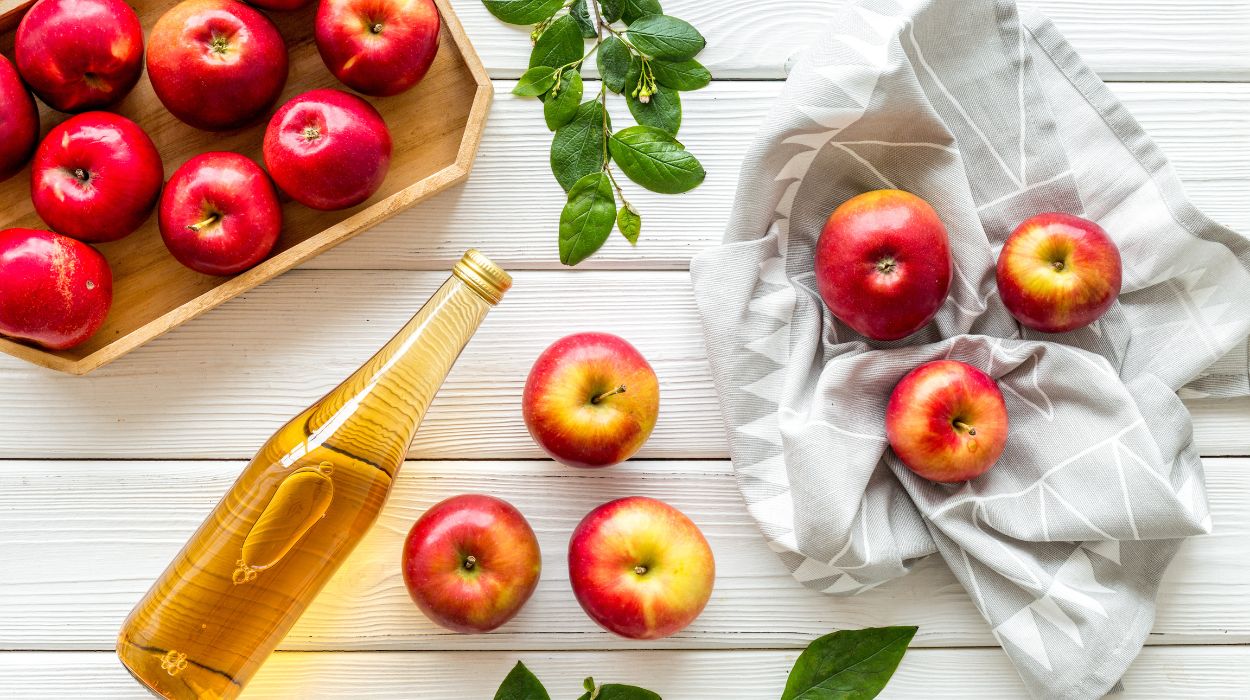
How To Drink Apple Cider Vinegar For Weight Loss In 1 Week In 2024
January 10, 2024
Taking apple cider vinegar has become a sensation for its supposed health benefits, despite its sour taste. Apple cider vinegar may…Read more -
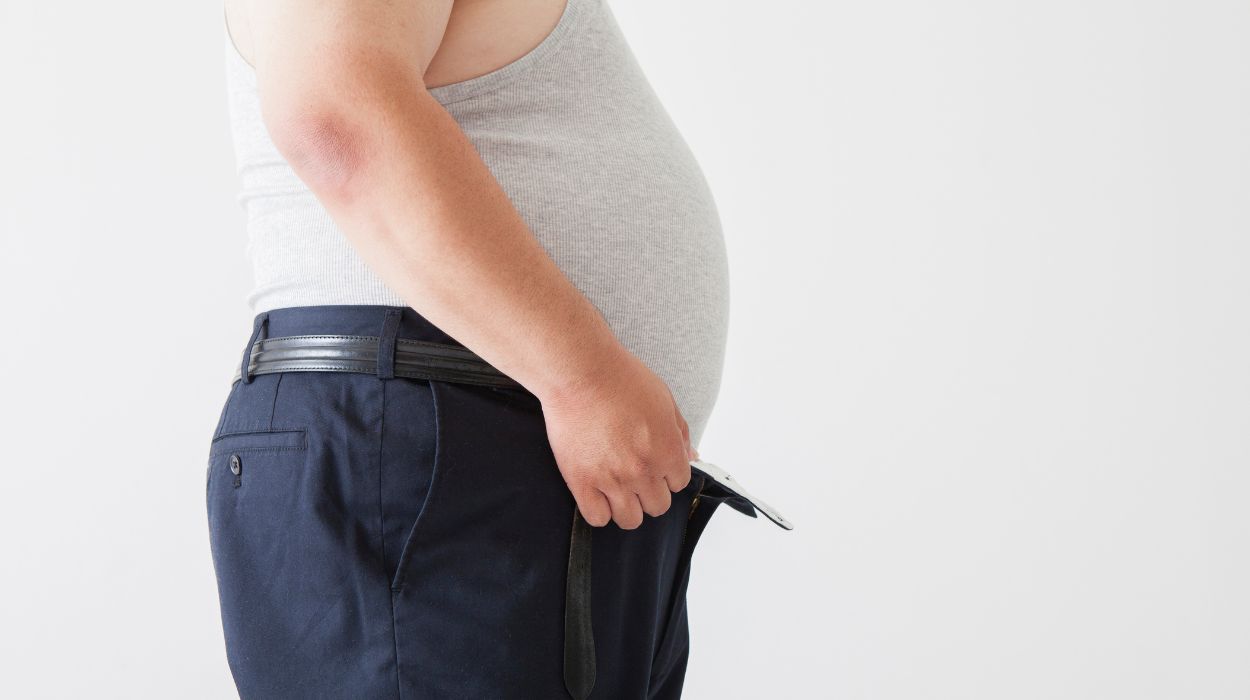
How To Lose Belly Fat After 50: Here’s 10 Tips For People Over 50 To Try In 2024
December 27, 2023
Losing weight over 50 can feel challenging, especially in stubborn areas like the abdomen. As we age, hormonal changes, slower metabolism,…Read more -
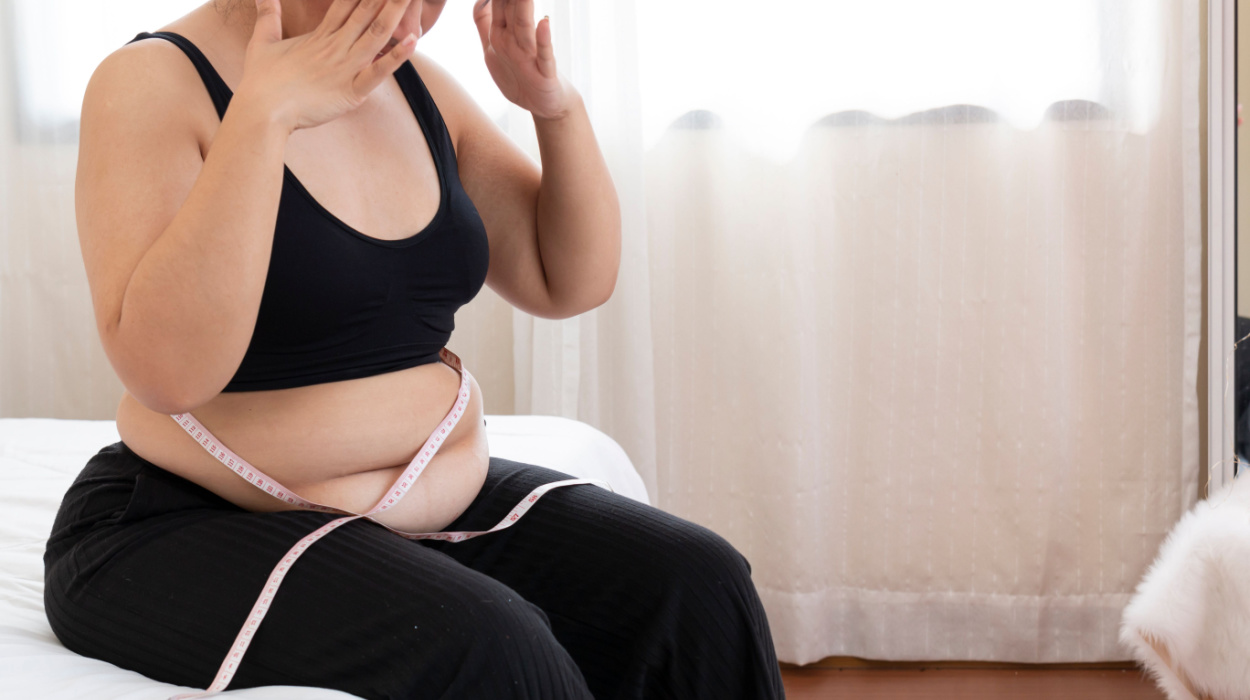
How To Lose Weight With Hypothyroidism – 10 Ways You Should Try In 2024
December 22, 2023
Hypothyroidism[1] is a condition that occurs when a person has low levels of thyroid hormone, and it most often develops when…Read more -

Hypnosis For Weight Loss: Unlocking Your Mind’s Potential For Success 2024
December 20, 2023
You’ve heard about various methods and tools to achieve weight loss and you might have looked into how to get ozempic.…Read more


